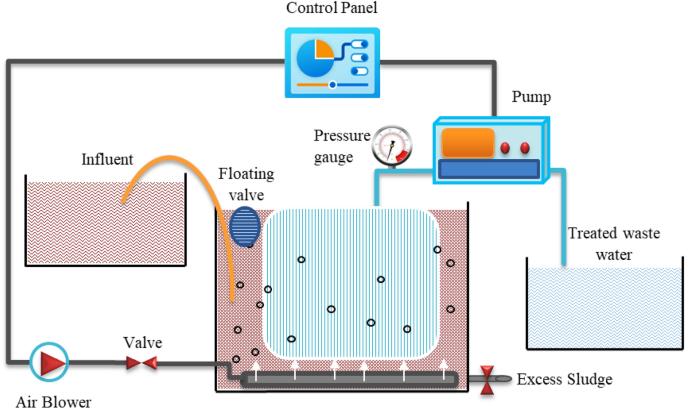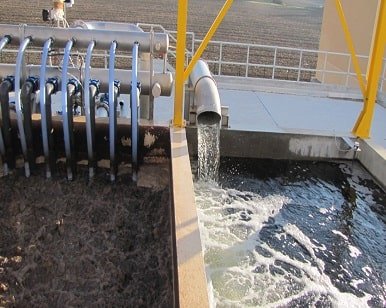Troubleshooting Common Issues with Membrane Bioreactor Systems
Troubleshooting Common Issues with Membrane Bioreactor Systems
Blog Article
Recognizing Membrane Bioreactors: The Future of Wastewater Therapy
Membrane layer bioreactors (MBRs) stand for a noteworthy innovation in the area of wastewater therapy, incorporating organic procedures with innovative membrane layer filtering to enhance effluent high quality. As international water deficiency and strict regulative structures come to be progressively pushing concerns, MBR modern technology supplies an effective reaction via its capacity to lessen footprint and maximize resource recovery. However, the fostering of MBRs is not without its obstacles, which merit mindful factor to consider. What are the crucial factors affecting their implementation and long-lasting practicality in numerous contexts? The answers may improve our technique to wastewater management.
What Are Membrane Layer Bioreactors?

The core elements of MBR systems consist of a bioreactor where microbial activity happens and a membrane unit that filters the combined alcohol. This double capability makes it possible for the synchronised deterioration of raw material and solid-liquid splitting up in a single step. MBRs can operate in both submerged and exterior arrangements, with submerged systems being more usual due to their small design and operational performance.
The adoption of MBR modern technology has obtained traction in different applications, varying from municipal wastewater treatment to industrial effluent monitoring. MBRs are specifically advantageous in scenarios where area is limited or stringent effluent high quality standards should be fulfilled. By maintaining a high focus of bacteria within the bioreactor, MBRs enhance the destruction of organic contaminants, consequently yielding greater treatment effectiveness contrasted to traditional methods.
Key Benefits of MBR Modern Technology
The integration of organic therapy with membrane filtering in MBR systems supplies various benefits that set it aside from standard wastewater treatment methods. Among the primary benefits is the improved effluent high quality. MBRs effectively eliminate suspended solids and virus, accomplishing higher degrees of purification that satisfy strict discharge requirements and assist in water reuse applications.

Another substantial advantage is the minimized sludge production. MBR systems create less excess sludge, resulting in lower disposal expenses and a reduction in environmental effect. The closed nature of the membrane system lessens the threat of smell emissions and boosts general process control.
Finally, MBRs are adaptable and flexible, making them ideal for different wastewater kinds, consisting of industrial and local resources. The capacity to incorporate with innovative treatment technologies better boosts their performance, making MBRs a promising solution for the future of wastewater administration.
Obstacles and Limitations of MBRs
While MBR modern technology uses various benefits, it also encounters numerous obstacles and limitations that can impact its extensive fostering. One significant challenge is the high resources and functional expenses connected with MBR systems. The preliminary investment for membrane materials and the necessary infrastructure can be considerable, making it less available for smaller industries or towns.
Furthermore, membrane layer fouling continues to be a crucial problem that can lessen system efficiency and increase upkeep demands. Fouling Get More Information takes place when solids, organic matter, or microbes gather on the membrane layer surface, leading to minimized leaks in the structure and needing regular cleansing or substitute.
One more limitation includes the intricacy of the modern technology. MBR systems require experienced employees for procedure and upkeep, which can be an obstacle in regions with restricted technological proficiency. The disposal of spent membranes provides environmental issues, as the products are often not biodegradable and can add to squander monitoring challenges.
Last But Not Least, while MBRs can efficiently treat a variety of wastewater, they might not appropriate for all applications, specifically those with high concentrations of fats, oils, and oils, demanding further study and development to address these constraints.
Applications of Membrane Bioreactors
In different sectors, membrane bioreactors (MBRs) have arised as a versatile remedy for wastewater therapy (Membrane Bioreactor). Their applications cover community, commercial, and farming settings, showcasing their flexibility and performance in varied settings. In municipal wastewater therapy plants, MBRs dramatically enhance effluent high quality, allowing for water reuse and decreasing the ecological impact of discharged wastewater
Industrially, MBRs are used in food and beverage useful reference handling, fabric manufacturing, and pharmaceutical manufacturing, where they efficiently deal with high-strength waste streams. Their ability to handle fluctuating tons and varying pollutant concentrations makes them specifically beneficial in these fields. Additionally, MBRs help with the removal of virus, suspended solids, and natural issue, contributing to conformity with rigorous discharge regulations.
In farming, MBRs are increasingly utilized for treating agricultural runoff and animals wastewater, enabling the healing of nutrients for plant food production. They additionally help in the treatment of greywater for irrigation, promoting lasting water management techniques.
The versatility of MBRs is further evidenced by their integration with other innovations, such as anaerobic food digestion and progressed oxidation procedures, boosting overall efficiency and resource recovery in wastewater treatment systems.
The Future of Wastewater Treatment
Advancements in modern technology and an expanding emphasis on sustainability are shaping the click now future of wastewater treatment. Membrane bioreactors (MBRs) exhibit this shift by incorporating biological treatment procedures with membrane filtration, resulting in high-quality effluent ideal for reuse. The pattern in the direction of round economies is triggering facilities to take on MBRs for their capability to recuperate resources, such as water and nutrients, from wastewater.
Technologies in membrane products and setup are improving the effectiveness and longevity of MBR systems, decreasing functional prices and energy consumption. Smart modern technology integration, including real-time surveillance and automated control systems, is additional maximizing performance and allowing predictive upkeep, thus decreasing downtime.
Moreover, regulative pressures and social assumptions are pressing industries and districts to take on even more sustainable techniques. Membrane Bioreactor. The shift in the direction of decentralized wastewater treatment options is obtaining traction, permitting local therapy that decreases transportation prices and power use
Final Thought
Membrane layer bioreactors (MBRs) represent a transformative strategy to wastewater treatment, incorporating organic processes with innovative membrane layer technology. The advantages of MBRs, consisting of improved effluent quality, lowered spatial needs, and reduced sludge manufacturing, position them as a practical service amidst expanding urbanization and stricter ecological laws. In spite of existing obstacles, the ongoing development in membrane products and operational strategies guarantees to reinforce the effectiveness and fostering of MBRs, ensuring their crucial role in the future of sustainable wastewater management.
Membrane layer bioreactors (MBRs) stand for a noteworthy development in the field of wastewater treatment, incorporating biological processes with innovative membrane layer filtration to improve effluent top quality.Membrane layer bioreactors (MBRs) combine biological treatment procedures with membrane layer filtration to efficiently treat wastewater.The assimilation of organic therapy with membrane layer purification in MBR systems offers various advantages that set it apart from standard wastewater therapy techniques. Membrane layer bioreactors (MBRs) exhibit this shift by integrating biological treatment procedures with membrane layer filtering, resulting in high-grade effluent ideal for reuse.Membrane layer bioreactors (MBRs) stand for a transformative technique to wastewater treatment, integrating organic processes with advanced membrane modern technology.
Report this page